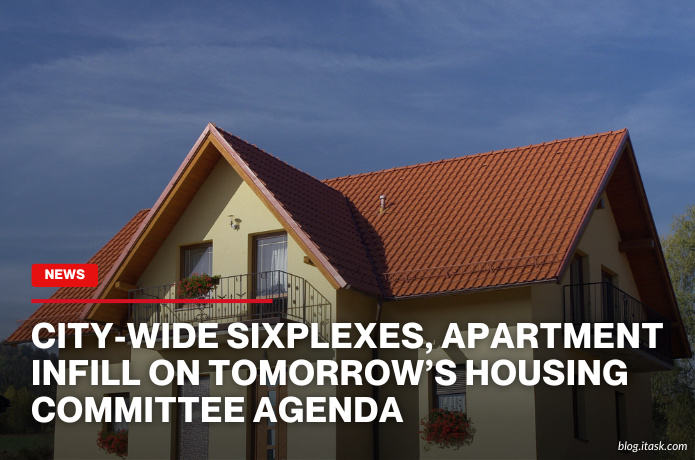City-Wide Sixplexes, Apartment Infill On Tomorrow’s Housing Committee Agenda
City-Wide Sixplexes, Apartment Infill On Tomorrow’s Housing Committee Agenda

Tomorrow, Toronto’s Planning and Housing Committee will take up a major proposal to allow six‑unit buildings—sometimes called “sixplexes”—and to expand housing within existing apartment sites across most of the city. This change is aimed at making better use of areas already supported by transit and public services. It builds on earlier work that legalized fourplexes city‑wide and piloted sixplexes in Scarborough North.
The first part of the agenda will review zoning changes to make semi‑detached fourplexes easier to build, to allow building a fourplex at the same time as a garden suite, and to set limits on bedroom numbers. These changes are meant to address lessons learned from the 222 building permits issued since city‑wide fourplex zoning was adopted in May 2023.
Next, the Committee will discuss city‑wide sixplex permissions. The planning report proposes zoning amendments that would allow detached homes across most residential zones to be built or converted to contain five or six units, while keeping the original building form intact. That permission would mirror the pilot program already tested in Scarborough North and help Toronto meet its commitments under the federal Housing Accelerator Fund, which allocated $471 million based on meeting housing milestones.
Another key item is apartment infill zoning. Staff are recommending allowing over 5,000 existing apartment properties to build extra housing—such as townhouses, overcladding units, or additions in unused common spaces. This is intended to shift away from the pre‑war “tower‑in‑the‑park” style and use existing infrastructure more efficiently.
If approved, these changes would help diversify housing across many neighbourhoods. They would allow families, seniors, and young people to stay in places they already live without needing a car or moving far away. Housing near transit corridors would also get a boost with more options. The proposals align with city goals to deliver an estimated 54,600 homes by 2031 and over 160,000 by 2051 through gentle density tools like sixplexes, laneway suites, and garden suites.
Public reaction has been mixed. Many community members and developers support the reforms as necessary to expand housing and offer more choices. Critics worry about impacts on parking, infrastructure strain, flooding and neighbourhood character. Staff reports note that sixplexes could fit on about 60 percent of lots in the pilot area and likely more in older suburbs, and that added density tends to stabilize local services and support aging‑in‑place. The meeting tomorrow marks a crucial step toward reshaping Toronto’s approach to missing-middle housing. If the committee opts in and Council follows suit, Toronto may unlock significant new funding and housing forms, while avoiding delays tied to rezoning. It would signal a shift in planning toward scaling modest multi-unit buildings that fit into existing neighbourhoods—and help address affordability, diversity, and sustainability in the years ahead.
